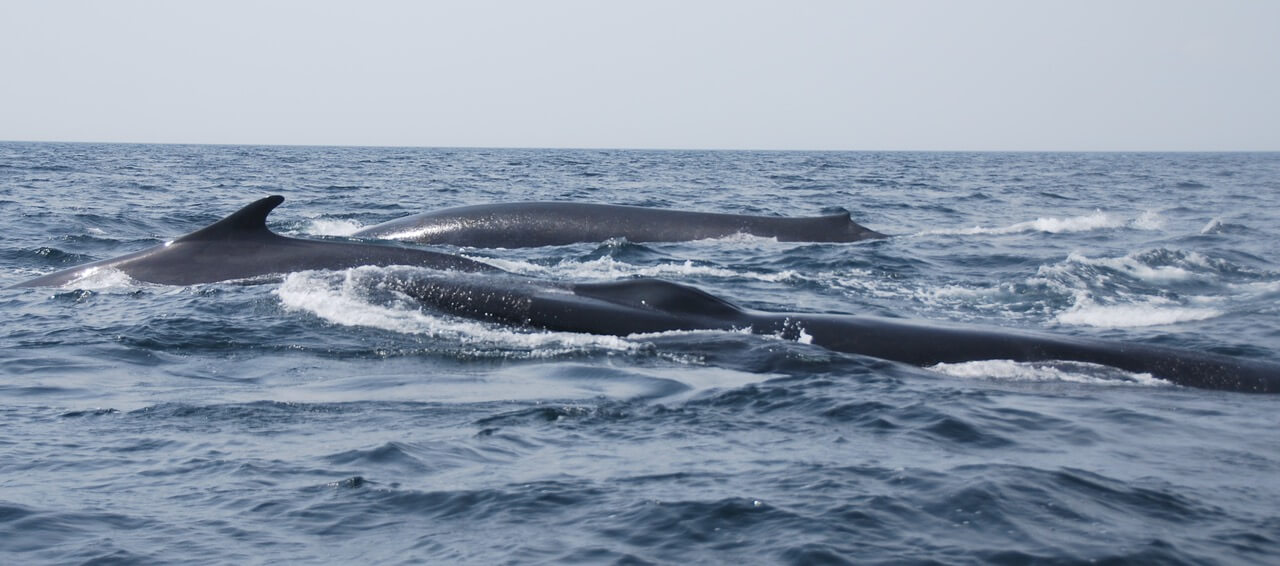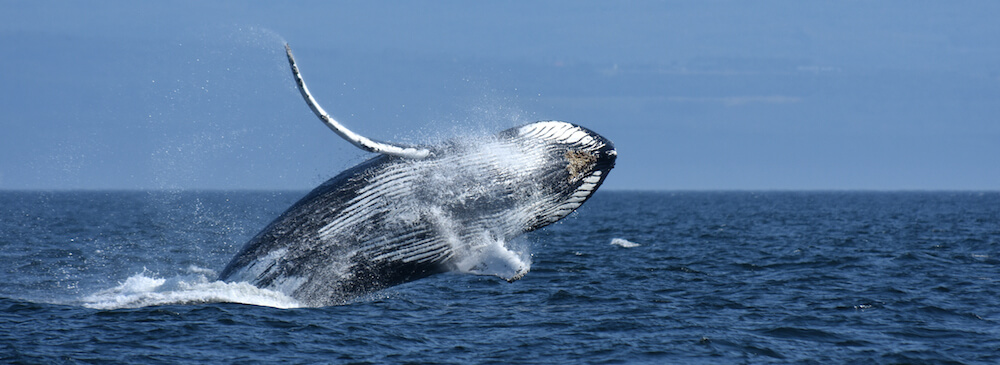Last week, it was white-sided dolphins in Gaspé Bay. This week, killer whales, the largest species in the dolphin family, make an appearance in the Lower North Shore!
At least four individuals, recognizable by their prominent dorsal fin and characteristic colour pattern, are observed off the coast ofBlanc-Sablon. What are they doing here? Although observations in this region are exceptional, the Estuary and Gulf of St. Lawrence lie within the range of the North Atlantic killer whale population. From one population to another, killer whales can differ significantly from one another in terms of dietary preferences, hunting techniques, behaviour, appearance or genetics. Some scientists even suggest that they be subdivided into several species.
Noteworthy fish
Another unusual presence: a great white shark has been hanging around the Magdalen Islands for the past few days. Its presence in the Gulf is not exceptional, as it is one of seven species of sharks that inhabit the St. Lawrence. However, according to the US organization Ocearch, this is the first time a great white shark has been identified specifically in this sector. “Brunswick” is fitted with a satellite tag to help better understand the movements of great white sharks.
Although it was not observed alive, the basking shark that washed up in Cap-d’Espoir comes as a surprise to passers-by. The second largest fish in the world, this species can be seen near the surface along the coast. Like certain species of whales, this shark has the ability to filter water – not with baleen but with structures associated with the gills – and feeds on plankton and small fish.
Back to whales
At the Mingan Island Cetacean Study (MICS), a few fin whales are reported this week off Longue-Pointe-de-Mingan. Where are the other large whales? Perhaps on the other side of the St. Lawrence! Nearly every day this week, a cruise employee in Gaspé Bay has been observing about fifteen humpback whales, up to four fin whales, two blue whales, minke whales and porpoises. With each trip out to sea, he has also been witnessing a number of large spouts in the distance that were not counted! He also notes a surprising number of breaches in which the whale thrusts a large portion of its body out of the water, including one by a juvenile humpback.
On July 11, for the first time this season, the MICS team photographs a female right whale named Aphrodite. Additionally, twice daily aerial surveys for right whales continue in the Gulf of St. Lawrence, and are still tracking a significant number of individuals.
About 15 fin whales, 12 minke whales and one blue whale are documented by the Sept-Îles Education and Research Centre. One whale in particular attracts the attention of researcher Anik Boileau: a fin whale with a curious colour pattern. Is it a hybrid? A dozen or so confirmed cases have already been documented around the world. Hybrids can be suspected by morphological characteristics, but can only be confirmed through genetic analysis. After validation by CERSI with Richard Sears, a blue whale expert at MICS, it is actually a fin whale that has been known to MICS for 21 years, according to a biopsy previously performed on the individual.
In Baie-des-Sables on Friday evening, a fin whale swimming near the coast surprises a group of fishermen. The remainder of the week, they also observe seals and gannets.
Between Tadoussac and Les Escoumins, at least three humpback whales have been seen this week, in addition to numerous fin whales and minke whales. At the mouth of the Fjord, an observer posted in Pointe-Noire on the morning of July 13 notices a compact group of belugas. The following day, from the docks in Les Escoumins, belugas are seen swimming quite close to the coast.
This map represents an order of magnitude rather than a comprehensive survey. It is to use for fun!
Legend for the whales
Dark grey: Fin Whale
Black: Right Whale
Turquoise: Humpback Whale
Dark blue: Blue Whale
Light grey: Minke Whale
Yellow: Unknown species
Legend for the dolphins
Light grey: Beluga
Brown: Harbour Porpoise
Legend for the seals
Grey: Grey Seal
Brown: Harp Seal
Turquoise: Harbour Seal







